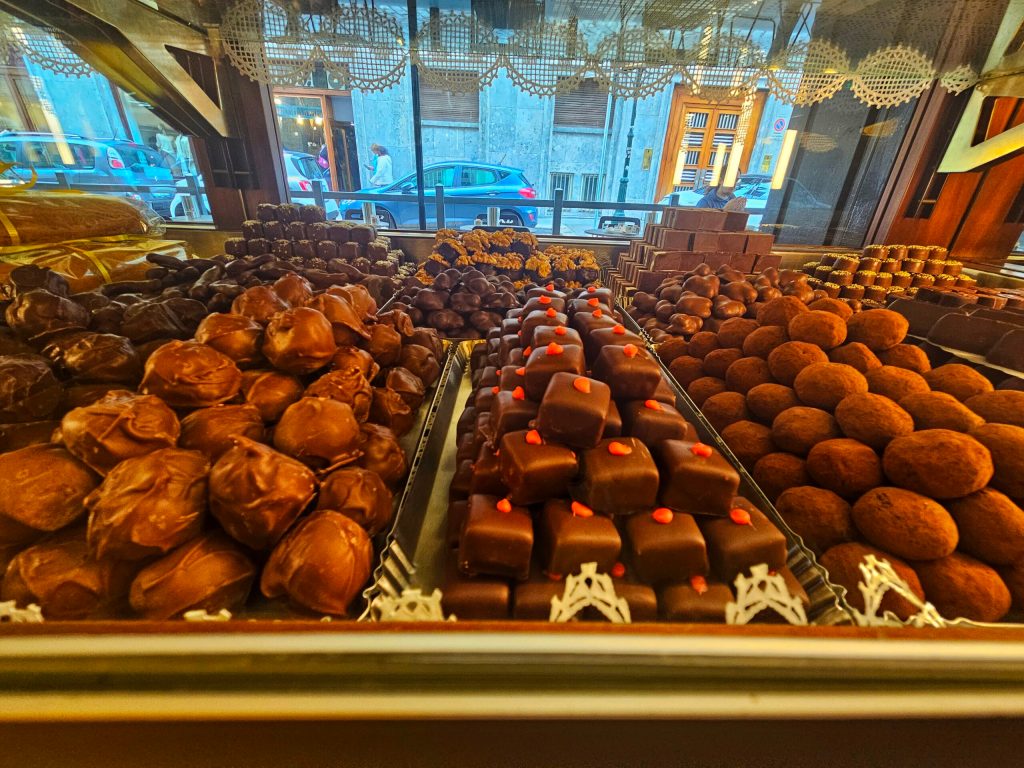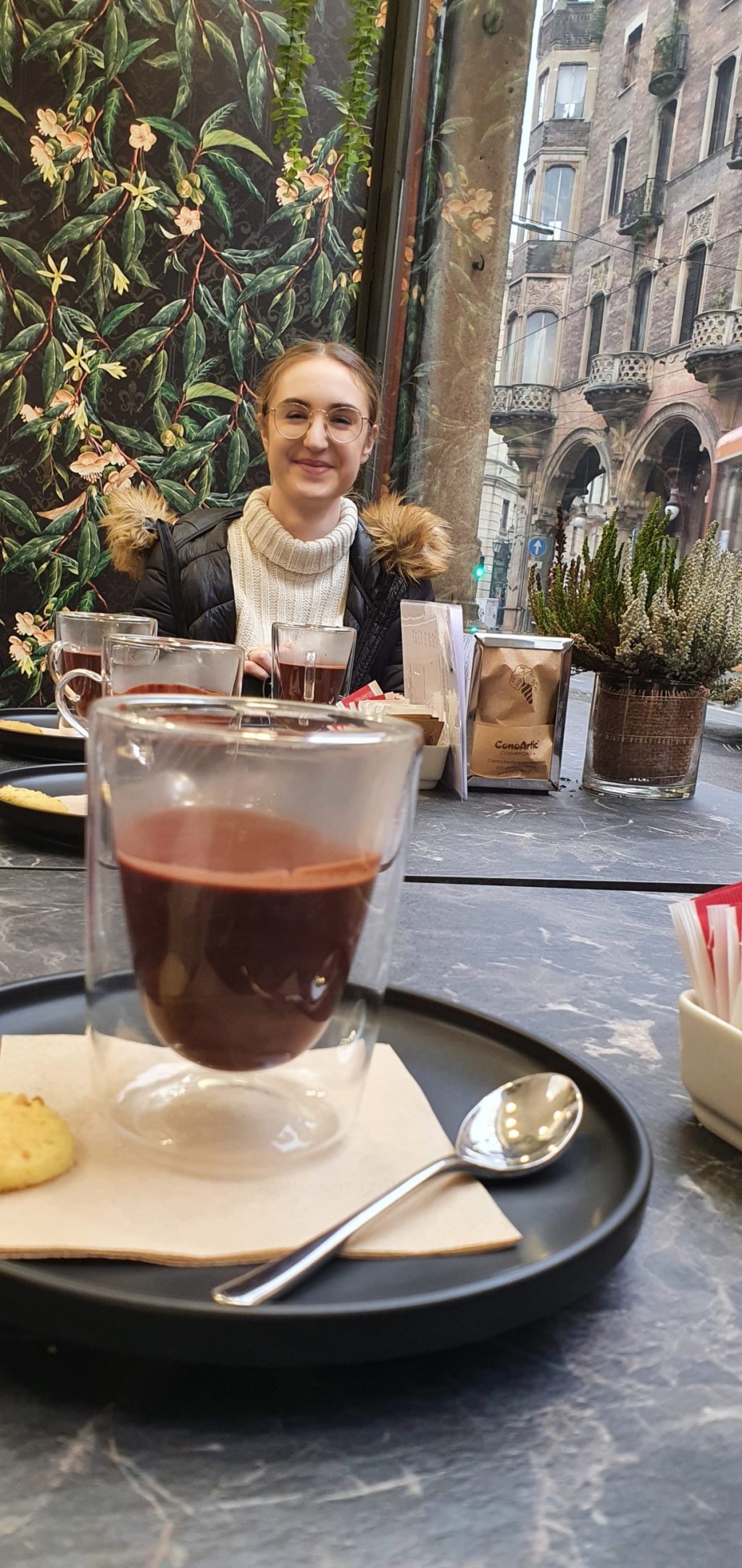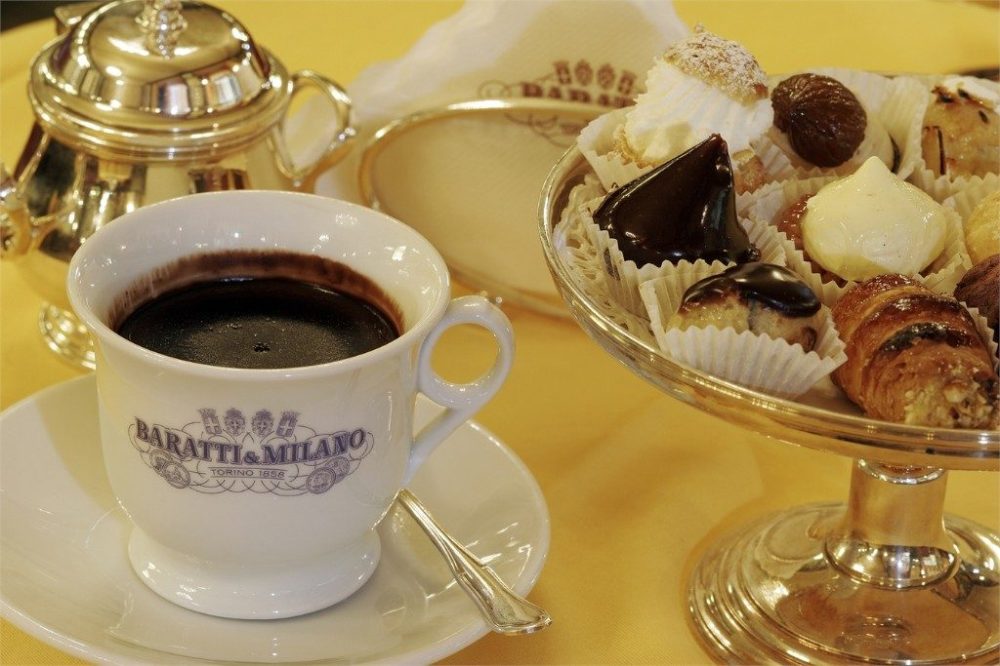UNWRAPPING THE SWEET SAGA: EXPLORING THE GLOBAL CHOCOLATE MULTIVERSE.

Chocolate delights in Turin. Artisanal chocolate pearls.
The fascinating journey through the chocolate multiverse.
For the past 4000 years, millions of people the world over have turned to this mysterious delicacy for rituals, medicine, romance, and sheer pleasure.
Every time someone uncovers a wrapper, or opens a box, they’re about to indulge in the phenomena behind a delicious food that carries a story of long journeys, exotic places and a delicate tropical fruit tree.
I am talking about the treat that makes life sweet around the globe. I am talking about that silky and marvelous potion of wonder named chocolate.

Chocolate Lovers on a journey through Turin’s delights. With I EAT. Food Tours
Humans love affair with chocolate began at least 4000 years ago in Mesomerica, in present day, Southern Mexico and Central America, where people living deep in the tropical rainforests discovered the edible properties of Theobroma cacao – referred to by Linnaeus as the food of the gods.
When the Olmec unlocked the secret of how to consume this bitter seed, they unintentionally launched an enduring phenomenon, whose success has became global in time.
My name is Cecilia, I am a food anthropologist and when I run my chocolate tours in Turin, the Italian capital of chocolate, I like to call myself as the chocolate fairy.
Today I’m excited to take you on a journey to discover the extraordinary history and popularity behind the pleasure of chocolate. It’s gonna be kind of a long, yet so fascinating, journey.
From the ancient Aztec elixir to the sophisticated confections of today. Hence this is just the First Act. Please, make yourself at home. Prepare some hot chocolate and enjoy the reading!
One of the largest industries in the world.
The making of chocolate has evolved into an industry so large that 40 to 50 million people depend on cocoa for their livelihoods.
With the appetite for chocolate at all time high, year by year the global demand continues to outpace production.
Most of cocoa grows ten degrees either side of the equator and that’s because cocoa trees grow better in humid, tropical climates, with a short dry season and regular rain.
The worlds top cocoa producing countries are: Indonesia, Nigeria, Cameroon, Brasil, Ecuador, Peru, Dominican Repubblica.
But with over two thirds of the worlds supply of commercial cacao comes from two west African countries: Ivory Coast and Ghana.
Beyond its delectable allure, chocolate is a powerhouse industry, ranking among the largest globally. From multinational corporations to artisanal chocolatiers, the sector employs millions and extends its influence from local communities to international markets.
The chocolate multiverse is a testament to the intricate interplay of flavours, textures, and cultures, making it a fascinating exploration for enthusiasts and a testament to the economic impact of this beloved indulgence.
Olmacs, Mayans, Toltecs. Chocolate was born “in a cup”
For almost 4000 years chocolate was mostly consumed in a cup, as a bitter beverage rather than a sweet edible treat.
To whom we should give our thanks for such a precious discovery?
To begin with, our gratitude should go to the Olmacs (1500 BC).
In fact, archaeologists have discovered in the graves of the Olmec priests, cocoa to sustain them on the long journey to the afterlife. Or maybe they were taking the cocoa with them as a present, as a gift to the gods to ensure they had a very happy afterlife.
After the Olmacs, the Mayans were those who took over the story. They were around about 1000 BC to 600 AD and they inhabitated the South of Mexico and parts of Guatemala. Lots of symbols all over the graves testify the discovery of chocolate.
In 900 AD, the Toltecs developed this legend, or this theory, that the God Quetzalcoatl, which was the winged serpent, came to Earth on the beam of a morning star and with him he brought the cocoa pod and the cocoa seed. He planted it ad gave it to the people.
The Toltects use to consume cold xocolatl (uacoatle), which in Aztec language means bitter water. It was more like a spicy meal rather than the regular cup of chocolate that comes to mind when we think about it.
Cocoa beans were also used as currency. A hundred beans would buy a slave, 6 beans a rabbit, for example.
Aztech have introduced cocoa to the Spanish court and to the king, who did not like it very much for its bitterness and for what was considered as a very unpleasant flavours.
Although someone had perceived the extraordinary potential (and perhaps also the intrinsic deliciousness) of this magical fruits – as soon as they were shipped to Europe…
Chocolate arrives to Europe. The Chocolate R-Evolution

1585: that is the first time in which cocoa beans were shipped from the New World to Europe. First to Spain, to be precise.
As previously mentioned, chocolate met the skepticism of the Spanish court – and the Europeans overall – due to its bitterness. So this brand new beverage found its way to monasteries.
As a matter of fact, monks and priests had the great intuition to make out of this powerful and unusual medicine a delicious treat.
How do you think they could accomplish the mission? The answer is simple (although it was not so obvious five hundreds years ago).
They add sugar to the bitter magical potion. Yes, drawing inspiration from their culinary expertise and the addition of sugar, a practice they were already familiar with, monks not only enhanced the taste of chocolate but also made it more appealing to the European palate.
That one precisely was the moment where the chocolate R-Evolution officially began!
By the early 17th century this sweetened chocolate elixir gained popularity among the nobility and aristocracy, eventually spreading across palaces and mansions of Baroque Europe.
The impactful transformation orchestrated by the monks played a pivotal role in establishing chocolate as a lavish indulgence, evolving from a kind of bitter medicine, used by the Aztecs in particular rituals and cerimonies , to the beloved sweet treat that keeps winning the heart of taste buds worldwide since then.
Perhaps without the monks’ innovation the chocolate multiverse would have never had the chance to exist. Or maybe it would have developed way later. Who knows?
My dear readers and chocolovers, the journey is still long and we are about to discover more about some European capitals which built an empire of chocolate, or anyway have significantly contributed to the chocolate industry over the centuries.
Italy, Switzerland, The Netherlands, United Kingdom, Spain… but also Pennsylvania and Patagonia!
But first thing first, right?
Hoping that you are liked the trip so far, I give you appointment to next Monday and the next blog post.
Love and Chocolate,
Cecilia
x
